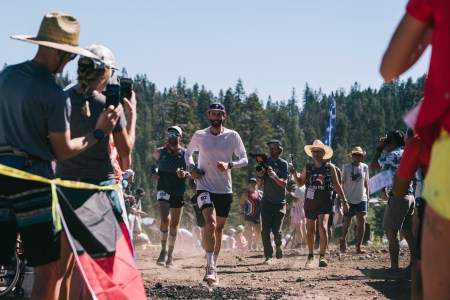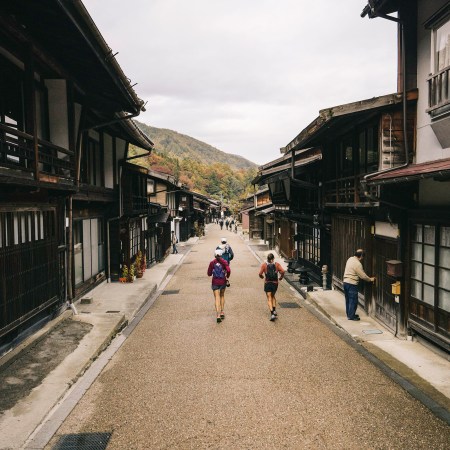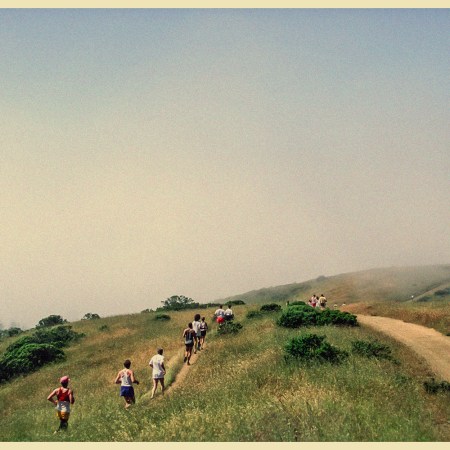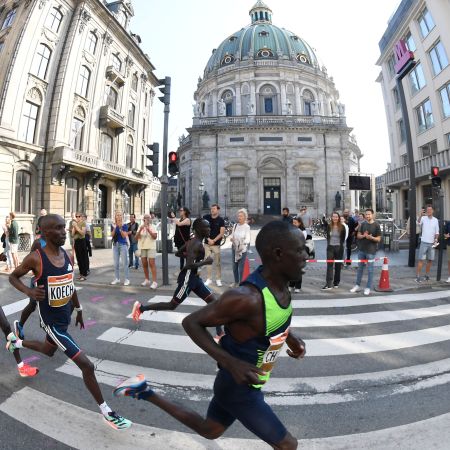Way back when I was in high school, studies arrived that favored dynamic stretching over static stretching for runners’ warm-up routines. A 2011 study published in the Journal of Strength and Conditioning explained that dynamic stretching not only decreases the risk of injury, but a static stretching warm-up routine can actually negatively affect athletic performance. The professional and prep worlds reacted in their own ways to the findings, which, of course, challenged decades of conventional wisdom.
Ahead-of-the-curve outlets like the Olympic Training Center and the Nike Oregon Project, which don’t wait for external scientific studies to act out a wellness hunch, simply continued what they were doing. But at the far less official level, I can’t remember any coaches (who, more often than not, were also tenured teachers — who, more often than not, were stubborn as hell) instituting a standardized dynamic stretching routine at the time. That’s not to say people were against it; it just wasn’t what people did yet. I can say with certainty that static stretching before a run or race was still a regular practice a decade and change ago, even among America’s elite prep runners.
Times have changed, clearly, and traditions and training have changed along with it. Widespread dissemination on tricks of the trade tends to have a trickle-down effect; today’s high school coaches are now well equipped to keep young runners’ legs healthy and primed for a PR.
Still, what about the casual jogger, leaving their home or apartment for a modest three-miler? Is the larger public aware of shifting sensibilities in the world of stretching? Below, a handy primer on how to stretch before running and safely and effectively make the switch from static to dynamic.
What’s It Like to Run for Nike…While Coaching High Schoolers?
Professional ultrarunner Tyler Green on how he prepares for race day, and helps others do the sameThe Dynamic Way
Why do runners now prioritize dynamic stretching? Well, it’s a more functional way of preparing for the task at hand. It aims for immediate, workable results, as opposed to static stretching, which is a long-term play meant to encourage elasticity in tendons and connective tissue.
Dynamic stretching takes the muscles through their full range of motion. It warms up the body, stimulating both the musculature used for running and warning the heart that’s about to be put through the ringer. It’s full-body, too; we talk a lot these days about “full-body fitness,” about functional, holistic moves or training points that engage the whole body. And dynamic stretching, as noted by physical therapist John Fiore, is an inherently full-body enterprise, which readies “the hips, quadriceps, hamstrings, gluteals, gastroc-soleus, intrinsic foot musculature and upper body-torso” during the course of a routine.
By contrast, as the Cleveland Clinic points out, static stretching doesn’t make much sense before putting in miles. It doesn’t even really pass the eyeball-test when you think about it. Sitting or laying on the ground, slowly pushing legs out or across your chest, none of that has much in common with the demands that begin at the starting line.
That doesn’t mean, however, that stretching is dumb and should be forgotten forever. Flexibility is hyper-important, especially in a sedentary society, and holding an elongated muscle in a fixed position for 30 seconds to a minute (without bouncing!) is a great thing to add to the habit tracker. Just save it for after the run, when the muscles are warm, or at the end of the day, perhaps after emerging from the shower. Pre-run sit-and-reaches can’t prevent injuries to the knees or Achilles, but they can literally inhibit the body’s performance capacity. The National Strength and Conditioning Association even reports that static stretching “decreases force production, power output, running speed, movement time and muscular endurance.”
A Sample Warm-Up
So, how exactly should one warm up? Run for five minutes at 50%, then begin dynamic stretching. Ideally, you’ll have a good chunk of space at your disposal (20 yards or more) and some kind of wall or fence. Practice repeats: lunges and knee hugs without breaking a slow, concerted stride, high-knee bounds, butt-kicks (pretty self explanatory), Carioca, and the inch worm.
This Western Wisconsin care provider, of all places, has a great collection of moves, with a diagram for each. Remember to keep moving while performing any of these, and to complete them through your designated marker — without putting in too much effort. The idea is to engage and activate the neuromuscular system, to prepare the body for all the movement that’s happening not long after.
Along a wall or fence, meanwhile, practice swings. South Carolina’s Furman Institute of Running and Scientific Training, which is run by exercise scientists/lifelong runners, has the hook-up. Think straight-leg lateral swings, bent-knee lateral swings and bent-knee forward swings. The first moves the leg across the body, the second alternates pushing it towards each shoulder and the final pushes it away from the chest, like the knee-pumping stride of a sprinter. If that’s all too complicated, just hold onto the fence and run purposely in place; remember holding onto the edge of the pool as a kid during swimming lessons, kicking up a water storm behind you? Before the lesson began, the idea was to become accustomed to movements in the water. It’s the same concept here.
Running can be an enchanting, addictive thing, but in order to keep at it, to get that CVS receipt-length list of benefits for the mood, mind and the body’s internal organs, we have to prepare properly. And that means getting off the ground.
The Charge will help you move better, think clearer and stay in the game longer. Subscribe to our wellness newsletter today.

























